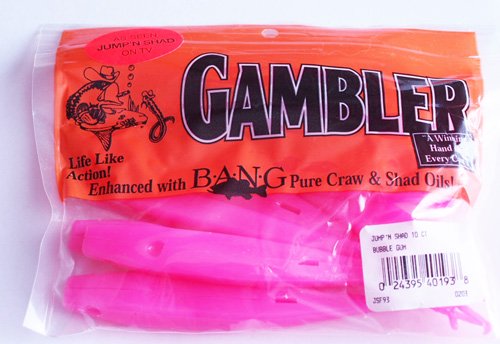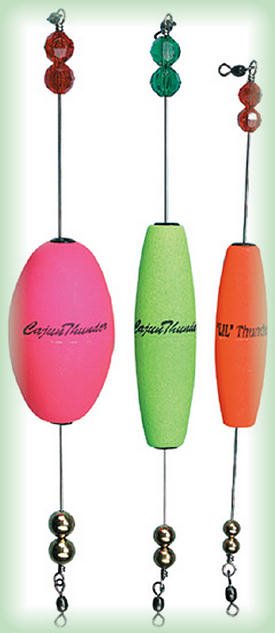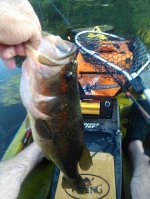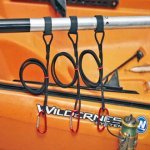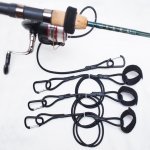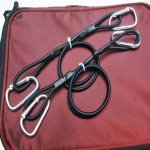~~ Redfish Lures That Really Work ~~
A Basic Guide to
Catching Big Bull Reds
Imagine one of your favorite redfish lures attached to the lip of a large bull red, there is nothing more exciting. With strong bursts of speed, screaming reels and bending poles, these mini torpedoes put up a great fight. The adrenaline shoots through your veins as you work the fish back to the boat. Incredible, to say the least.
If you have fished the Gulf, then you know that redfish are one of the most popular and sought after fish in the mud and seagrass flats. As a bonus, where you find redfish, you often find sea trout, which can be caught on some of the same baits and lures.
In addition, a person can catch them without a boat. Surf and wade fishing is an extremely popular fishing method.
If you are a kayak fisherman, you have an advantage due to a quiet approach and you can reach places wade fishermen only dream about going. Keep in mind that redfish are easily spooked so a low profile approach is essential.
Every year many freshwater fishermen try their hand at saltwater fishing. The methods are a bit different and can be intimidating at first. However, you will be happy to know that many of the tactics used for bass, walleye, pike fishing can be used to catch redfish and sea trout. Soft plastics, spoons, spinner baits and even topwater baits, when worked properly, can hammer reds and specs.
Types of Redfish Lures
Soft Plastic Baits:
Plastic jerkbaits that resemble the fish's prey work well. Lures such as DOA's Shrimp or minnow baits, such as Berkleys Gulp. Also Zoom's Super Fluke and Gamblers Saltwater Series baits can be made to dart in different directions and resemble a wounded or fleeing bait fish.
White/Chartruese, Pink, or New Penny colors work well, but any color can work at different times.
Popping Corks and plastic Jerk baits:
Almost every flats fisherman has heard of the popping cork. They are incredibly effective and are an excellent tool for catching reds and trout.
There are a
few different types: cone shaped corks, oval shaped corks and cigar
shaped corks. Preference depends on what you are used to or popularity in a geographical location. All have specific benefits, but all will work. The cone shaped corks give more splash when working it back while the cigar shapes can be more quiet when hitting the water. It is the sound the cork makes on the retrieve. The clicking sound is made with sharp rod jerks. The sound the cork makes can be what a shrimp makes when flipping their tail and the rattle can be the sound of the fish gills flaring and closing.
The corks can be weighted to cast further or can be purchased with no additional weight. Attach a DOA shrimp soft plastic bait to the hook behind the cork and you will have a fish on in no time. (Photo by Jimmie G. - http://jimmie-g.com)
The cork is not simply a float but is part of the lure. You can make the corks yourself or you can purchase proven models. Thunder Chicken, Cajun Thunder, and Legend are popular brands that works well, but there are also many others.
You can also use live shrimp behind a popping cork. If
you use a circle hook, remember to not set the hook. Circle hooks are
designed to keep the fish from being cut hooked. Instead the hook
naturally sets in the corner of the fish's mouth. To hook a fish with a
circle hook, simply start reeling in and the hook will do the rest.
To
rig the popping cork, tie on a 18" to 24" fluorocarbon or monofiliment
leader (20 to 30 lb test) and the bait or lure on the end. If you are
using live bait, you can put a split shot on the leader to help keep the
bait in the strike zone.
Spoons
A good spoon to try is the H and H
Secret Redfish Spoon. It has been on the market less than ten years and
thousands have been sold. Some fishermen use this redfish lure more than any
other lure. It is uniquely designed for redfish and fishing in seagrass.
One of the advantages of this spoon is the barrel swivel and the swivel cap cover. The swivel is to prevent line twist and the cap that covers the swivel keeps the swivel from grabbing sea grass. It slides through the grass where the fish are waiting in ambush.
Another good weedless spoon is the Johnson Silver Minnow. The best colors are gold and silver.
Spinner Baits
One of the first lures I ever used as a young fisherman was a beetle spin. I caught lots of bass and crappie on these spinner baits. The redfish spinner baits look just like the beetle spins, except they are much larger. The sizes are generally 1/2 to 3/4 oz spinner baits. If you haven't tried one of these redfish lures, you need to stock up on them.
You can use a skirt over the hook but the best is a soft plastic bait. I prefer a soft plastic paddletail bait on the hook but you can also use a curly tail. Color choice is determined by preference and conditions, but I often reach for a white/chartreuse color first. There are many good ones on the market designed and labeled for redfish. Many color variation work well in baitfish or shrimp colors. The most popular blade color is gold, which adds flash and vibration in the water.
Fish this bait along grass lines or above the grass. You can cast around and under docks and bridges. It can easily work through thin grass but pulling through heavy grass may be a problem.
Topwater Baits
There is nothing more exciting than seeing a fish slam a topwater bait. For me, watching the fish inhale your topwater is unequalled. Topwater baits should to be worked properly based on their design. If you have used topwaters in freshwater, those actions can be duplicated in saltwater.
An example of a great redfish lure is the Bomber Saltwater Grade Badonk-A-Donk . The Rapala Skitter Walk and Heddon Super Spook Redfish are also great baits. Try to match the size of baitfish in the water, but if you are limited then tie on a 4" to 4.5" lure.
Bone colored, white with orange on bottom, silver and black and many other colors work well. Find the best redfish lure color based on water color and conditions.
These lures are best when worked side to side in a method called "Walk the Dog". Cast the bait over grass flats, mangrove edges, around docks or where ever the fish are at. The side to side action mimicks a wounded baitfish and redfish and sea trout can't resist it.
Redfish Lures back to Hammerhead Kayak Supply
Copyright 2015-2025 Hammerhead Kayak Supply's Legal Information Our Privacy Policy and Terms of Use |
